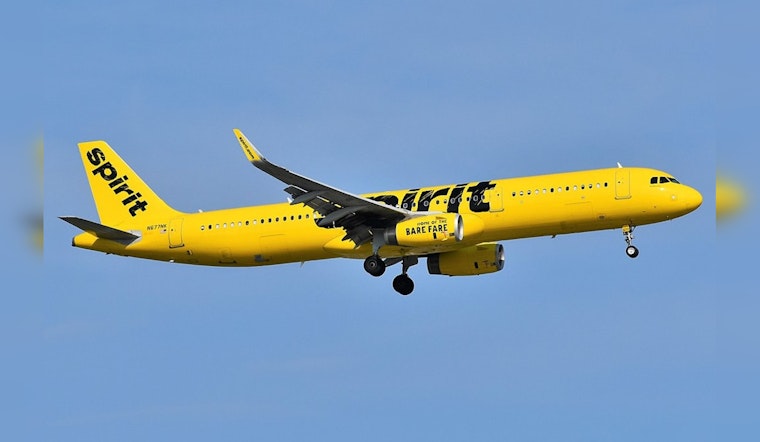Spirit Airlines, headquartered in Miramar, Florida, files for bankruptcy, following a staggering loss of more than $2.5 billion since the beginning of 2020, Spirit Airlines is navigating the turbulent skies of financial woes with the declaration of a Chapter 11 bankruptcy process. As reported byNBC Miami, the airline aims to maintain uninterrupted operations, reassuring customers that flights and bookings will proceed as usual.
Despite the fallouts from the pandemic, Spirit has managed to increase passenger miles slightly by 2% in comparison to last year. However, a decrease in revenue per mile of nearly 20% has been a contributing factor to the airline’s financial decline. AsNBC Miamireports, the struggle is compounded by the forthcoming debt payments exceeding $1 billion. Spirit’s shares took a hard hit, plunging 25% following discussions of a potential bankruptcy that were made public, leaving shareholders to grapple with a 97% decrease in stock value since 2018’s profitable season.
Amid the financial crisis, Spirit Airlines CEO Ted Christie has been strategic in negotiations over debt refinancing. “The chatter in the market about Spirit is notable, but we are not distracted,” Christie was quoted in an earnings call, maintaining a focus on improving liquidity and reinventing product offerings in the market, as obtained byU.S. News. The airline’s initiatives extend to restructuring fares, bundling services such as priority boarding and internet to draw customers in a stagnant low-frills flight market.
Nevertheless, even as Spirit endeavors to reposition itself, the airline plans to reduce its end-of-year schedule by nearly 20%, an effort that analysts believe may actually better serve its competitors. Deutsche Bank and Raymond James experts suggest that airlines such as Frontier, JetBlue, and Southwest are likely to benefit the most from this cutback due to overlapping routes with Spirit, as detailed byNBC Miami. Moreover, Spirit’s young fleet, once enticing for a takeover, is now compromised by a series of required repairs to Pratt & Whitney engines, causing significant grounding of aircraft and pilots furloughs.
Bankruptcy in the airline industry is not unprecedented; U.S. air carriers have historically faced the headwinds of economic difficulties, witnessing companies like PanAm and TWA succumbing to financial pressures. Spirit’s present conditions echo past challenges that led to reconfigurations of the industry where companies leveraged laws that allowed the restructuring of debts, such as the merger of American Airlines with US Airways in 2013, concluding the last bankruptcy among major U.S. airlines. In the aftermath of a disrupted merger with JetBlue, thwarted earlier this year by antitrust concerns, Spirit Airlines is now cast into the familiar, albeit daunting process of corporate reemergence from bankruptcy.
Note: Thank you for visiting our website! We strive to keep you informed with the latest updates based on expected timelines, although please note that we are not affiliated with any official bodies. Our team is committed to ensuring accuracy and transparency in our reporting, verifying all information before publication. We aim to bring you reliable news, and if you have any questions or concerns about our content, feel free to reach out to us via email. We appreciate your trust and support!



Leave a Reply